
How to Get Rid Of That Dog Pee Smell in Your Carpet
This post may include affiliate links. Please read my disclosure policy.
Your dog has peed on the carpet. You know he has. Even if you can’t smell it right away, as soon as you lean into your 15-minute mat workout on the living floor, you get that faint familiar whiff of pee. And if you can smell it, you better believe your dog can smell it! And what about guests? Can they smell dog pee in your house? Shudder!
Pee is the bane of any pet parents’ existence. You’ve cleaned it, re-cleaned it, and probably cleaned it yet again. And yet the smell is still there. So you frantically type in “how to get rid of dog pee smell in carpet for good” in the Google search bar.
Now you’re here! But first, let’s talk about why your dog pees in the house. It doesn’t do any good to keep cleaning pee stains if your dog is just going to return to repeat his crime.
4 Reasons Your Dog Is Peeing On Your Carpet
While every dog’s physiology and psychology are unique, there are some very typical reasons why dogs pee in the house. And once you identify your dog’s reason, or his “tinkle type,” you can work to correct the problem, clean up the pee one last time, and finally be rid of the smell.
Reason #1: He’s Not Neutered
This is really common if your dog is male. Your dog may not actually be peeing because he has to, but (yikes!) because he wants to! Urine is your dog’s way of marking his turf. And even if your dog is neutered, if he started marking before he was neutered, the behavior may become ingrained and a bit harder to fix.
You can learn more about how to end urine marking in this post.
Pin Me!
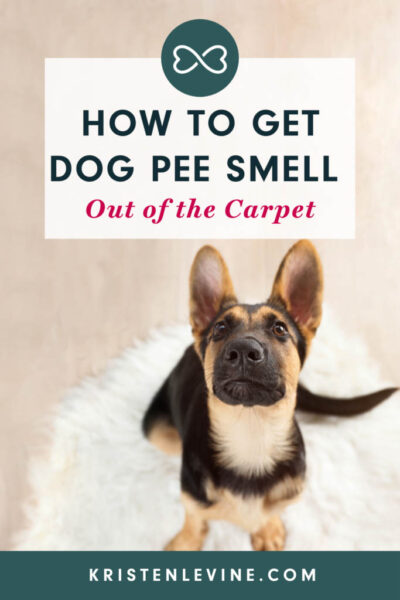
Reason #2: He’s Anxious
Pet anxiety is a topic near and dear to my heart. Both my late dogs, Buck and Chilly, had severe anxiety to the point where they would experience the equivalent of a panic attack. Buck had severe separation anxiety to the point where his behavior turned destructive. And Chilly had severe noise anxiety and needed medication to make it through noise events like thunder or fireworks.
Fortunately, urinating was not a symptom of their anxiety, but it is for many dogs. If your dog is displaying signs of anxiety, his indoor peeing might simply be a response to his mental state. Have you brought home a new family member, fur or human? Or is there construction going on next door? Identifying your dog’s anxiety triggers can not only mean relief for him but a pee-free home for you.
Reason #3: He Needs to Go Outside More Often
This seems so simple and yet it requires the most effort on our part as parents. Small puppies may need to go outside every hour and older puppies may need to go out every two hours. And every dog, puppy, adult, or senior, should be let out upon waking, after every meal, and before bed.
It requires diligent effort to remember to let your dog out frequently, especially if he’s not inclined to let you know that he needs “outside.” To get yourself in the habit, set a reminder alarm on your device. Eventually, your dog will start notifying you when he needs to go out. And don’t ignore him when he does! Make sure to let him out immediately and then reward him for doing so.
And remember, small dogs need much more frequent potty trips than bigger dogs. These “tinky tinklers” often pee, not because of behavioral reasons, but because their bladders are simply smaller than larger breeds.
Reason #4: Your Dog Has a Medical Condition
Sadly, our dogs don’t always maintain the level of health we would love for them to have. Kidney, bladder, and liver conditions can all cause your dog to urinate even when he doesn’t want to. Senior dogs may also deal with diminished cognition, affecting their ability to go outside rather than on your carpet.
If you suspect this is the case with your dog, make an appointment with your veterinarian right away.
Now that you’ve addressed the indoor peeing problem at its root, it’s time to finally get that pee smell out of your carpet!

How to Get Dog Pee Smell Out of Your Carpet
Now for the good stuff! I’ll let you in on a secret: you can’t properly clean up that dog pee smell with just any household cleaner. The reason gets a little science-y. Dog pee contains several compounds. These include uric acid, bacteria, hormones, and ammonia. As the urine breaks down, ammonia concentration increases and emits a substance called mercaptans. It’s this substance that gives dog pee that skunky, musty smell.
And since it’s a biological compound, you need an enzyme cleaner that targets that specific compound. Only then can you be rid of that dog pee smell for good. This is why I usually don’t recommend some of the more popular home remedies (e.g., sprinkle baking soda, use a white vinegar solution, etc.), as these don’t exactly tackle the problem that causes the pee smell—the bacteria.
So here’s what to do.
Step 1: Remove as Much Pee As Possible
As soon as possible, place a dry cloth over the fresh dog urine stain. Soak up as much pee as you can. You can use paper towels, but sometimes you honestly won’t know how much you’ll need! Personally, I like to use white terrycloth rags like these so I can simply wash them and reuse them. Plus, they don’t transfer any color or dye to my carpet or upholstery..
You may need more than one rag (or a whole bundle of paper towels), so come prepared to the scene of the crime with plenty of supplies.
Step 2: Soak the Spot with an Enzymatic Cleaner
I have tried what feels like a gazillion enzyme cleaners. There are good and bad points to many of them, which is why I eventually developed my own brand of enzymatic cleaners: Kinderbean.
The Kinderbean No Stress Mess Eraser enzymatic cleaner works on both hard and soft surfaces, has no dyes or artificial fragrances, and only has five all-natural and non-toxic ingredients.
An enzymatic cleaner is so important in cleaning up pet messes because it doesn’t just hide that horrible dog urine smell or stain—it breaks them down completely!
The outcome of removing the pee stain and pet odors relies on the enzyme cleaner but also upon how well you clean.
Once you’ve soaked up as much pee as you can, you’ll saturate the area with your cleaner (if you’re using a cleaner with dyes or harsh chemicals in it, be sure to spot-test first). Really put it to it. And then you’ll take your white rag or paper towels and agitate the spot for at least 1-2 minutes.
Step 3: Let it Sit
Next, you’ll let the cleaner do its work for a few hours—overnight if possible.
In the morning, you can remove the rag, and let it air dry.
Step 4: Repeat as Needed
Remember, most carpets and even some area rugs, have padding underneath, and dog urine stains can lurk there for some time before they once again make their way to the top. If you notice the spot appearing again, simply repeat the process.
How to Get Rid of Set-In or Old Pee Stains
Just when you think you’ve eliminated that dog urine smell from one place, you go into another room and get hit back with that unpleasant but familiar scent! It seems you’ve stumbled upon a set-in or older dog urine stain.
When faced with old or set-in urine stains, start by locating the exact spot of the dog urine. You may need to get on all fours and sniff out the dog urine smell. If you still can’t find it, use a blacklight! Turn off all lights, and flash your light onto spots where you suspect there’s dog urine. Pee stains will show up as a dull green or yellow under the blacklight. You’ll have to do a (sorry!) sniff test to make sure it’s a urine stain, though. That’s because blacklights wiill show any organic stain matter – not just urine.
You can still use the Kinderbean enzymatic cleaners to remove the urine stain. You can follow the steps as normal above. But for deep-set pee stains, if the pet stains are gone but the smell persists, a second or third treatment with the enzyme cleaner using a wet vac carpet cleaner from a local rental can provide a more intensive clean, drawing out the stain from deep within the carpet fibers and padding underneath.
How to Get Rid of Dog Urine Smell in Rugs, Pillows, Dog Beds, and Sheets
When your furry friend has a mishap on rugs, pillows, dog beds, or sheets, start trying to blot out as much of the dog pee as possible. Simply follow the steps above, but after step 4, throw in the items in the wash, if they’re machine washable, and use 1-2 ounces of Kinderbean’s Snuggle Bug Laundry Wash to tackle those urine stains and odors.
What to Do with Your Dog After He Pees On the Carpet
It’s very important to use each dog urine accident as a means to train your dog not to pee inside. That doesn’t mean scolding them or rubbing their nose in pee. Dogs rarely react well to that, and it doesn’t produce lasting results. If you do happen to catch your dog in the act of peeing, you can make a loud noise by clapping to startle them and let them know that behavior is not acceptable.
If your dog’s peeing problem stems from a medical issue like anxiety, old age, or kidney disease, the following is far less applicable. However, for repeat indoor pee offenders, here’s how to curb your dog’s indoor peeing and reduce future incidents.
First, take your dog outside immediately after he pees inside. This reminds him that peeing is only acceptable outdoors.
I almost never recommend pee pads, as this merely trains your dog it’s okay to pee inside. And even if it’s on a pad, why do you want the dog urine smell in your house?!
After bringing them outside and after you’ve thoroughly cleaned up the dog pee with an enzymatic cleaner, place a treat or food dish over the spot with the urine odor. If your dog pees in a different spot, do the same thing again. Placing food on the spot creates a new significance to the area—this is not a pee spot.
Be prepared to do this many, many times before your dog realizes that nowhere in the house is his pee place! It may even require him to eat dinner on the guest room floor.
Dog urine is probably one of the most frustrating pet problems, and yet it is solvable! For a more comprehensive guide to all of your pee problems, download my free ebook below.



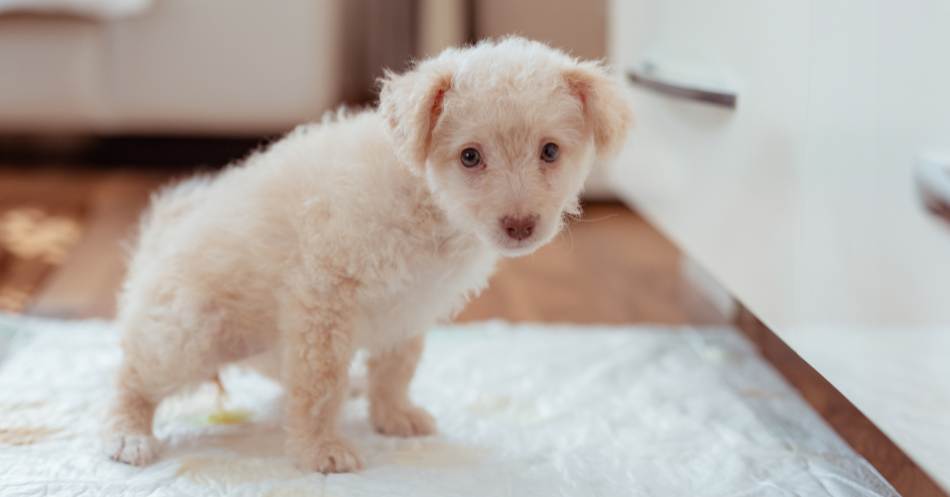
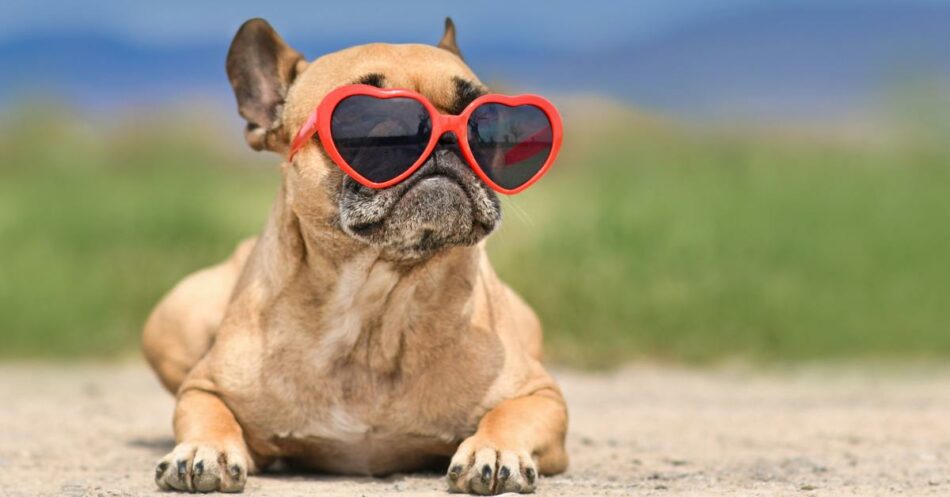
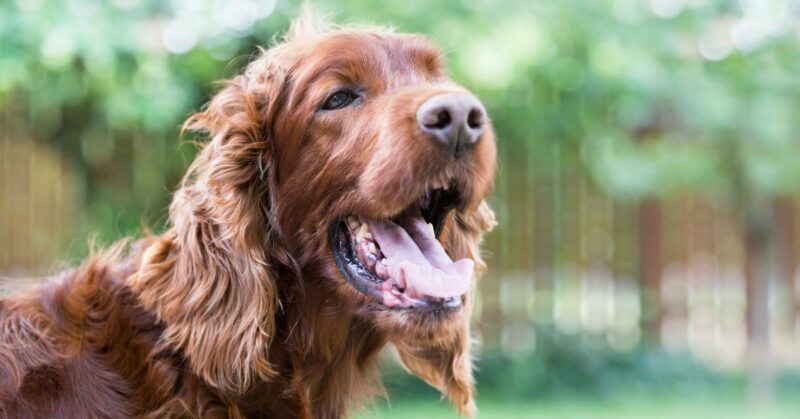
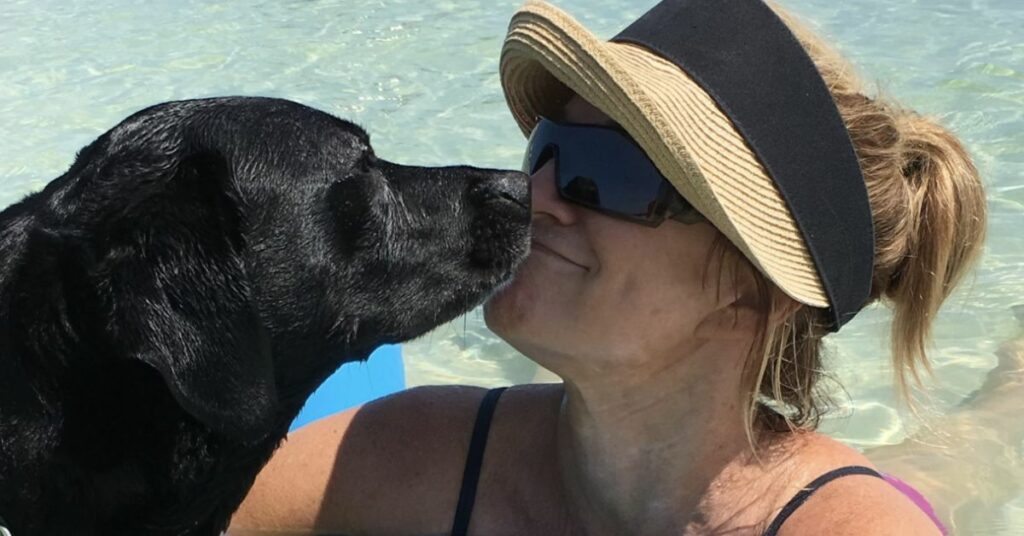
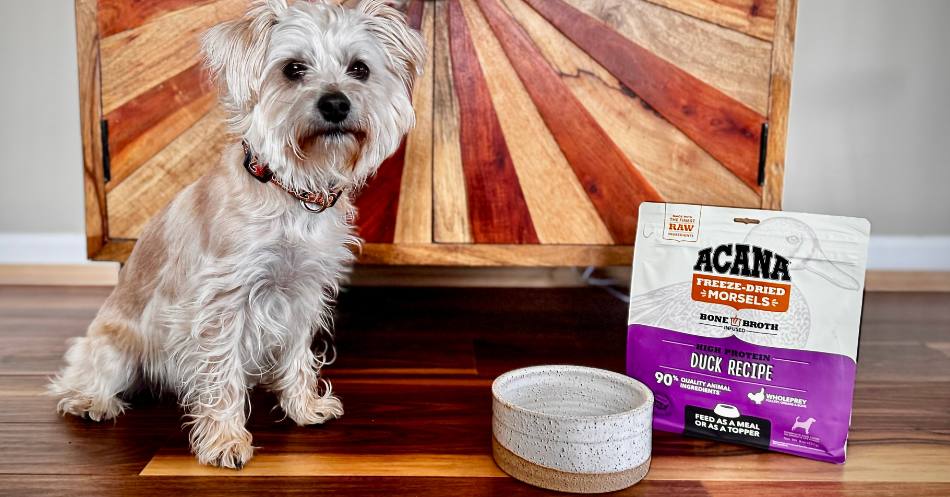
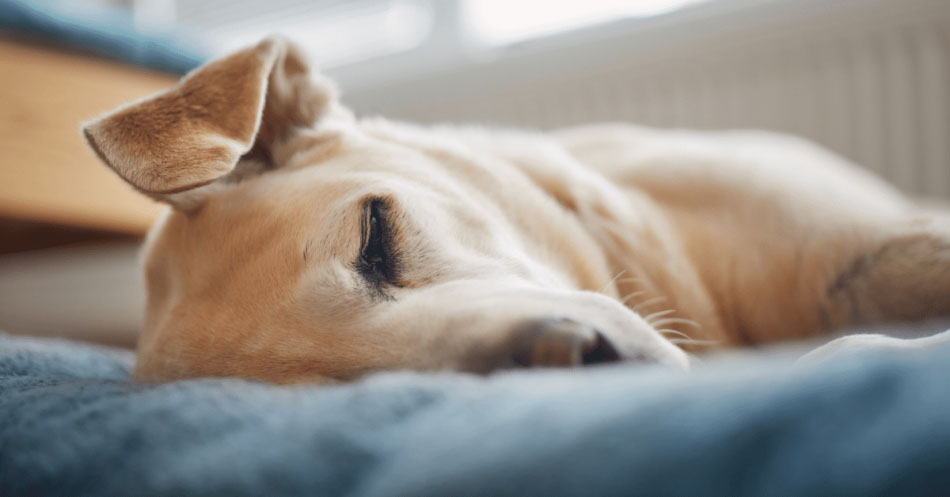
This Post Has 0 Comments